|
February marks the kickoff the African American Read-In! Secondary educator Payton Dearmont prepares for celebrating the "diverse ideas, authors, and ultimately, literature" in her Freshman and Sophomore classes. By practicing culturally responsive pedagogy, Dearmont covers her goals of increasing engagement in the classroom, and emphasizing the need for students' sense of belonging.
Take a closer look at the cross-cultural curriculum and Dearmont's insights by clicking read more below!
0 Comments
by KATE Pages Editors
As National Poetry Month comes to a close, we felt it germain to highlight the poetry interactions throughout our respective communities. From poetry readings, to open mic nights, poetry is indeed alive and well in Kansas. As educators, we seek authentic ways to incorporate arts in our student’s lives, and one of the best ways we can do that is to seek out authentic opportunities to interact with art in public. by Krystal Jordan, Diversity & Inclusion Chair; Nathan Whitman, KATE President and KATE PAGES Editors Black History Month is an annual celebration of African American achievements and contributions to society. It is a time to reflect on the struggles and triumphs of black Americans throughout history and to honor their legacy. In honor of Black History Month, organizations like the National Council of Teachers of English (NCTE) and the Kansas Association of Teachers of English (KATE) have been working to promote diversity, equity, and inclusion in education through various initiatives and activities.
One such initiative is NCTE's African American Read-In, which takes place every February. The Read-In is a nationwide event that encourages people of all ages to read and share works by African American authors. Participants can organize their own Read-In events in schools, libraries, community centers, and other public spaces, and share their experiences using the hashtag #AARI23 on social media. The goal of the Read-In is to promote diversity in literature and to raise awareness of the contributions of African American authors to American culture. In Kansas, KATE members are also taking action to promote diversity and inclusion in their classrooms. Krystal Jordan, a teacher at Wichita North High School and the leader of KATE's Diversity, Equity, and Inclusion Committee, has been using Black History Month as an opportunity to engage her students in collaborative learning and to promote awareness of African American history. Her classroom door decoration project is a great example of this. Instead of simply teaching her students about the Civil Rights Movement, she asked them to research and share information about African American figures from a variety of categories, using QR codes to link to additional resources. By encouraging her students to explore the contributions of a diverse group of historical figures, Jordan is helping them to develop a deeper understanding of African American history and its impact on American society. Nathan Whitman, the current President of KATE and a teacher at Derby High School, is also working to promote diversity and inclusion in his classroom. As the sponsor of his school's Diversity Club, he has been collaborating with his students to create interactive posters for the school's hallways, highlighting notable persons of color and black film and art. By providing opportunities for students to explore the contributions of African Americans to various fields, Whitman is helping them to develop a broader understanding of the contributions of black Americans to American culture. Black History Month is an essential time for reflecting on the profound impact of African Americans on American society. It is also a moment for educators to celebrate the achievements of black Americans and promote diversity, equity, and inclusion in public education. Initiatives like the African American Read-In and classroom projects, as organized by Krystal Jordan and Nathan Whitman, demonstrate the meaningful contributions of educators in enhancing the learning experience for students. However, the responsibility of highlighting black history in public education should not rest solely on these initiatives. It is imperative that educators work to promote an inclusive educational experience for all students and ensure that the contributions of African Americans to American society are recognized and celebrated year-round. As we celebrate Black History Month, we’d love for you to share your story with KATE PAGES! What are you doing in the classroom and in your communities to honor the legacy of African Americans? By Dr. Katie Cramer ***The following post was originally posted on Dr. Cramer's personal blog, which can be found here. In her groundbreaking book Cultivating genius: An equity framework for culturally and historically responsive literacy, Dr. Gholdy Muhammad convincingly argues that Black and Brown excellence has been erased from our curriculums and that contemporary education prioritizes the teaching of basic skills to the detriment of our students, particularly our students of color. To address these significant issues, Muhammad (2020) developed the Historically Responsive Literacy (HRL) Framework based on her research on Black Literary Societies of the early 1800s in which “literacy was not just for self-enjoyment or fulfillment, it was tied to action and efforts to shape the sociopolitical landscape of a country that was founded on oppression” (p. 22). The four pursuits of the HRL Framework The HRL Framework features four interwoven pursuits that also align with those of the Black Literary Societies of the early 19th century:
In her book, Muhammad argues that the HRL Framework is useful in all content areas at all levels. She explores each of the four pursuits in detail and convincingly argues the value of each one. For example, in describing identity development, Muhammad (2020) reminds us that identity was stripped from enslaved Africans and so it is vital that people of color know themselves in order to tell their own stories (p. 64). We must encourage our students to speak for themselves, and we must listen. We must also interrogate and resist our own deficit thinking (e.g., labeling students first/only as “at risk,” “defiant, “unmotivated, “tier 3”), and instead take an appreciative stance toward their existing literacies (Bomer, 2011, p. 21). We must check our (colleagues’) bias when speaking about students who have been and continue to be marginalized in schools. We must listen to Muhammad’s words: “I have never met an unmotivated child; I have, however, ‘met’ unmotivating curriculum and instruction” (2020, p. 65). Indeed, our students’ identity stories must begin with their excellence (Muhammad, 2020, p. 67). Erasure of Black and Brown Excellence Dr. Muhammad convincingly argues that knowledge of Black Literary Societies and Black and Brown excellence has been erased from our curriculums throughout PreK-16, including in teacher education programs. Like Larry Ferlazzo (2020), I am embarrassed to admit that I had never heard of Black Literary Societies before reading her book. She urges teacher educators (those who prepare future teachers) toward the following pursuits:
Exploring the HRL Framework As teachers (at all levels), we must interrogate our own practice using the HRL framework, asking ourselves for each pursuit: “Where is the evidence in my practice?” and “What are my goals for improvement?” To engage in this work, I urge you to review questions for reflection from Dr. Muhammad that accompany each pursuit and consider how you might revise (or design new) lessons/units to fulfill these pursuits—and engage in your own intellectual development by exploring Dr. Muhammad’s work further (see links the list of references below): Identity
Skills
Intellect
Criticality
Friends, we must interrogate our curriculums—the ones we design AND the ones provided by our school districts. As Dr. Muhammad (2021) reminds us, we “have enough genius to do this work.” So let us begin. References Bomer, R. (2011). Building adolescent literacy in today’s English classrooms. Heinemann. Ferlazzo, L. (2020 Jan. 28). Author interview with Dr. Gholdy Muhammad: “Cultivating genius.” Edweek. https://www.edweek.org Muhammad, G. (2020). Cultivating genius: An equity framework for culturally and historically responsive literacy. Scholastic. Muhammad, G. (2021 Mar. 17). Cultivating genius and joy: An equity model for culturally and historically responsive literacy [Webinar]. WRITE Center. https://www.writecenter.org/webinars.html Further reading Learn more about Dr. Gholdy Muhammad by viewing her faculty profile at Georgia State University. For more information on Black Literary Societies, read Cultivating Genius and/or Forgotten readers: Recovering the lost history of African American literary societies (2002) by Elizabeth McHenry, the first chapter of which is available HERE. 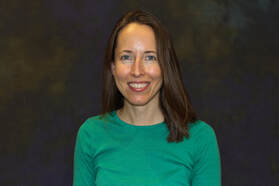 About the Author Katherine Mason Cramer is a former middle school English teacher and a professor of English Education at Wichita State University. She has been a KATE member since 2010 and an NCTE member since 2000. She serves on the KATE Executive Board, and has served as Editor of Kansas English since 2017. She can be reached at [email protected]. by Michaela Liebst February 1st marks the first day of Black History Month, and with all of the events that have transpired over the past year, the celebration of black culture, influence, and pride feels more important than in years past. As educators, we are given a unique chance to highlight Black voices and bring them to the forefront of our curricular focus, exposing students to new concepts, ideas, and styles that they may have never experienced before. The KATE blog team feels passionately about this endeavor, and wants to aid you in bringing minority voices to the forefront. We are excited to provide a list of novels created by ELA teachers for both elementary and secondary grade levels that represent not only black characters, but other minority groups as well. We believe representation in literature is the key to equity and that creating a culture of understanding and inclusion within our classrooms is essential for helping to ease some of the dissonance that our communities, states, and nation are currently facing. We hope that this list inspires you to consider changing up the books you include in your curriculum, or to spice up your classroom library so that students have more access to a diverse range of books. I also encourage you to check out this blog post by Dr. Katie Cramer regarding the NCTE’s position statements “...to support curricular inclusion…” of all types of diversity. We are aware that combining the beliefs of your district with our nation’s current political climate could possibly deter you from wanting to provide access to these texts. However, we challenge you to start small and use the position statements as a way to advocate for the inclusion of these texts in your school buildings. Overall, we are excited for the opportunity to share this list with you and hope it inspires you to take advantage of this month to shake things up and prioritize the inclusion of all voices in your curriculum. 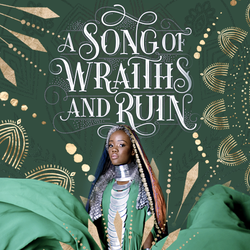 Book Suggestions for Secondary ELA Teachers BLACK HISTORY MONTH A Song of Wraiths and Ruins by Roseanne A. Brown: “The first in a fantasy duology inspired by West African folklore in which a grieving crown princess and a desperate refugee find themselves on a collision course to murder each other despite their growing attraction.” - suggested by Madison Jewell, Middle School ELA Teacher 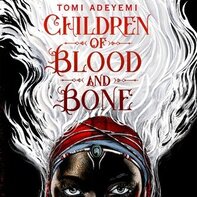 Children of Blood and Bone by Tomi Adeyemi: “The first book in a series about a girl trying to restore magic. The monarchy tries to stop her.” - suggested by Madison Jewell. Ghost Boys by Jewell Parker Rhodes: “A Black boy who was killed by a cop comes back as a ghost along with other black boys unjustly killed to make a difference.” - suggested by Krista May-Shackleford, Elementary Media Specialist 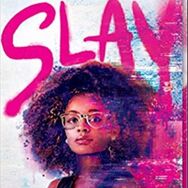 Slay by Brittney Morris: “Slay is a great read—A Black female protagonist has designed a game only open to Black players and keeps her role a secret. Her game has real world consequences and she suddenly finds herself over her head. I’m not a gamer but enjoyed it on so many levels.” - suggested by Lizanne Minerva, High School ELA teacher OTHER MINORITY GROUPS Middle-Eastern Culture -The Wrath and the Dawn by Renée Ahdieh: “Sharazad wants to get revenge on the boy-king who murders his new bride the night they marry. She chooses to marry him but comes to find he may not be like what he seems.” - suggested by Madison Jewell Latinx Culture - Into the Beautiful North by Luis Alberto Urrea: “Into the Beautiful North depicts fun, memorable characters who embark upon the dangerous journey to cross the border into America. This author has a unique way of combining humor, realistic teenage angst, and the serious issue of border crossing that keeps you turning pages and cheering for the heroine and seriously hoping for a sequel!” - , suggested by Deborah McNemee, High School ELA teacher LGBTQ+ - Cemetery Boys by Aiden Thomas: “A trans boy determined to prove his gender to his traditional Latinx family summons a ghost who refuses to leave” - suggested by Madison Jewell 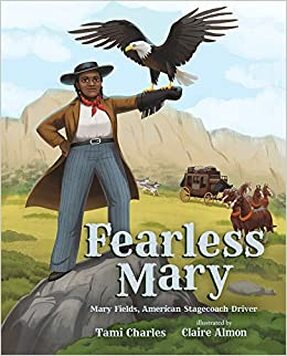 Book Suggestions for Elementary Teachers BLACK HISTORY MONTH Fearless Mary by Tami Charles: “A real-life story that takes you back to the western front and hard dirt trails! Mary was the first woman stagecoach driver – the first African American woman stagecoach driver, in fact! This book shares some of her trailblazing experiences during her journeys carrying much-needed supplies and much-welcomed letters to people who had moved out west! Comic-book style illustrations make for a fun accompaniment to her story, including how her actions have influenced present-day mail delivery!” -suggested by Hannah Kraxberger, an elementary student teacher 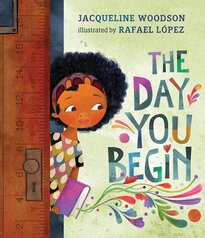 The Day You Begin by Jacqueline Woodson: “The Day You Begin is about a young girl experiencing kindergarten for the first time. She is excited and nervous at the same time! Everyone seems so different. When the students share what they did over the summer, it’s hard for Angelina. She hears of all the wonderful stories of adventures her classmates went on while she stayed home and watched her sibling. Angelina finds her voice to share that she stayed home and, even though she didn’t experience any amazing stories, she MADE stories and that’s okay...Everyone has similarities and differences, and that’s what makes us beautiful!” - , suggested by Hannah Kraxberger CHILDREN W/ DISABILITIES Moses Goes to a Concert by Isaac Millman: “This book encourages the use of sign language throughout and includes accurate, colorful illustrations of how to sign the text. The book also exemplifies more subtle attributes of d/Deaf culture, such as some of the students waving to show their applause. The most admirable trait of Moses Goes to a Concert is the depiction of Moses and his friends as happy children who have typical lifestyles. The book does not focus on their disability as a problem to be fixed, and Mr. Samuels teaches them ways to thrive and enjoy activities in unique ways.” - suggested by Hannah Schoonover, an elementary student teacher Why Does Izzy Cover Her Ears? Dealing with Sensory Overload by Jennifer Veenendall: “This book details how confusing school can feel for a child who has a sensory processing disorder. This book could also help a teacher or parents realize that frequent misbehaviors often have an underlying cause. Classmates of a child like Izzy could better understand the reactions their classmate has and the interventions their classmate uses after reading this book. This book could also help a child with a sensory processing disorder explain how or what they are feeling in certain situations and give them a character with whom they can relate.” - suggested by Hannah Schoonover The Seeing Stick by Jane Yolen: “The Seeing Stick begins with Hwei Min feeling sad that she cannot see and shows her father trying to help fix her disability. However, as the book progresses it shows Hwei Min’s emotional transformation as she becomes comfortable “seeing” with her fingertips. The Seeing Stick gives the message that Hwei Min did not need to be “fixed.” However, she just needed the correct help and tools to allow her to embrace her disability.” - suggested by Hannah Schoonover We’ll Paint the Octopus Red by Stephanie Stuve-Bodeen: “Stephanie Stuve-Bodeen, author of We’ll Paint the Octopus Red, strove to write this book from a child’s point of view on what having a younger sibling with Down syndrome could be like.” -suggested by Hannah Schoonover GENDER A is for Awesome! by Eva Chen: “I really liked this board book about awesome women. I really enjoyed the quotes by Amelia Earhart, Katherine Graham, Queen Elizabeth I, and…you! Each page features an incredible woman and has a quote by her. I really liked that quotes are included, and they are so beautiful! The illustrations will easily capture your reading buddy’s attention and keep yours. It’s primarily for the 0-4 age range, but I think it would be engaging for kindergarten and first grade students, too!” - suggested by Hannah Kraxberger 50 Women in Science by Rachel Ignotofsky: “Fifty women, born from 350 CE through 1977, have their stories and inventions and experiments recorded in this book. You’ve got your (now) well-known Katherine Johnson, Marie Curie, and…SURPRISE! Did you know that Hedy Lamarr, star of Hollywood’s Golden Age, was also an inventor? She’s most definitely more than just a pretty face. Each biography has an illustration of the woman, a quote from her, a small summary of what she’s accomplished, and a full page detailing how and when she made her mark on science. With all that information, it’s definitely not a sit-down-and-read-all-at-once kind of book, but highly worth your time. This book will be in my classroom for sure.” - suggested by Hanna Kraxberger CULTURAL The Proudest Blue by Ibtihaj Muhammad: “It’s the first day of school and Faizah’s older sister Asiya gets to wear the most beautiful deep blue hijab she has ever seen. It’s a big deal because it means Asiya is all grown up now! But Faizah doesn’t understand why some kids at school tease her sister for the hijab. Don’t they know it is an honor? Don’t they see the beauty in it? Written by an Olympic medalist, this book explains the meaning of the hijab to the Muslim faith and to the women who wear it. The colors and illustrations used are eye-catching for the reader (and listener!) to engage with. Moreover, it tells a wonderful story of being brave, resilient, and understanding of differences. “ - suggested by Hannah Kraxberger Same Same but Different by Jenny Sue Kostecki-Shaw: “A tale of two pen pals, this is a book of exploring differences! Elliot tells about his American house. Kailash writes a letter back about how his house in India is different, but also the same! Kailash writes about his pet. Elliot writes back to share about his pet and how it’s different. As the letters go on, the boys find that same and different are things that they share – in a lot of aspects!” - suggested by Hannah Kraxberger We Are Grateful by Traci Sorrell - “This book walks through memories of the Cherokee people using the native word for “grateful” to apply to different situations as a way of remembering the past and celebrating the future. Side note – This was perhaps the first book I’ve had the pleasure of reading that involved Native American tribes in a non-Pilgrim perspective or setting and it was so good.” - suggested by Hannah Kraxberger While we know that this list doesn’t even begin to scrape the surface of all of the incredible books available to teachers, we are excited about this list because it contains books that have been vetted by actual teachers in actual classrooms.
If there’s a book you feel passionately about that should have made the list, comment it below so that we can continue to celebrate and include the voices of both Black culture as well as other minority groups. Happy February and Happy Black History Month! 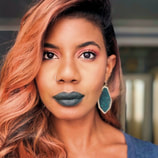 This year, KATE is pleased to announce that on November 7th at 2 p.m., Nic Stone, author of the New York Times bestseller, Dear Martin, will deliver a virtual keynote address followed by a Q&A session, available to all KATE members as our gift to you for your continued support and dedication to teaching English in the state of Kansas. Nic Stone is an Atlanta native and a Spelman College graduate. After working extensively in teen mentoring and living in Israel for several years, she returned to the United States to write full-time. Nic's debut novel for young adults, Dear Martin, was a New York Times bestseller and a William C. Morris Award finalist. She is also the author of the teen titles Odd One Out, a novel about discovering oneself and who it is okay to love, which was an NPR Best Book of the Year and a Rainbow Book List Top Ten selection, and Jackpot, a love-ish story that takes a searing look at economic inequality. Clean Getaway, Nic's first middle-grade novel, deals with coming to grips with the pain of the past and facing the humanity of our heroes. Nic lives in Atlanta with her adorable little family. In lieu of this exciting keynote speech, KATE wanted to provide its members with a little preview of Nic's personality and flair. Cue a hilarious and telling game of "Would You Rather...?" between the author and KATE's VP, Erica Shook. Please enjoy the following tidbits that Nic was so gracious to share with us, and we hope you'll join us on Saturday! Shook: Ok, Nic. Would you rather:
Potter or Snape Stone: SNAPE ALL DAY EVERY DAY. Shook: Know it all OR Have it all? Stone: Definitely have it all. Knowledge can be burdensome. Shook: Talk like Yoda OR Breathe like Darth Vader? Stone: Like Yoda, speak I would. Shook: Be a superhero OR Be a famous singer? Stone: I am CLEARLY both. Tuh. Shook: Go to work OR Stay home and bang on drums all day? Stone: Drums. Shook: Be transported to a place and time of your choosing in the past OR Be transported to a random place and time in the future? Stone: Def place and time of my choosing in the past. Shook: Steal honey from a bear OR Steal honey from a beehive? Stone: I'll take the bear. Shook: Be 50% good at everything OR Be 100% good at one thing? Stone: 100% good at loving people! Shook: Jump into a pool of lava OR Jump into a pool of freezing water? Stone: I mean I die either way, so... Shook: Be stuck inside on a good day OR Be stuck outside on a bad day? Stone: Inside. Sleep is always an option. Shook: Be color blind OR Have no taste buds? Stone: Yeeks... color blind. Shook: Always say everything on your mind OR Never speak again? Stone: Always say everything. (These are brutal.) Shook: Have the power to read minds OR Have the power to read hearts? Stone: I wanna read hearts. Shook: Fight 100 duck-sized horses OR Fight 1 horse-sized duck? Stone: 1 over 100. Even though a horse sized duck sounds terrifying. Shook: Live in a space station OR Live in a deep-sea submarine? Stone: Space station! Shook: Pop OR Soda? Stone: Eww neither. Coke. Sprite. Fanta. Pepsi. CALL IT BY ITS NAME. Shook: Chili and cinnamon rolls OR Chili and cornbread? Stone: Cinnamon rolls. #dessert Shook: Lose the ability to read OR Lose the ability to write? Stone: How dare you! Not choosing. So there. Shook: Lipstick OR Earrings? Stone: This is getting worse and worse. (Earrings.) Shook: Lipstick OR Shoes? Stone: And here I thought we were friends. Smh. (Shoes.) Get registered if you haven’t already. You are not going to want to miss KATE in conversation with Nic Stone. See you all Saturday! Erica Shook, KATE Vice-President Abstract Over the course of history, various groups have challenged, banned, and burned texts out of fear and the desire to control the thoughts and beliefs of a populace. Dictatorial regimes such as Hitler's Nazi-controlled Germany used "bonfires [to] 'cleanse' the German spirit of the 'un-German' influence of communist, pacifist, and, above all, Jewish thought" (Merveldt 524). Modern religious fundamentalism seeks to control a populace either through fear and indoctrination like the ultra-conservative, nearly-literal witch hunt of J.K. Rowling's Harry Potter series when religious leaders of various Protestant denominations feared that the hit young adult book series would teach impressionable minds actual witchcraft. One of the most famous and still frequently taught banned books is Mark Twain's The Adventures of Huckleberry Finn. In this paper the argument is made for the teaching of banned books by a case-analysis of Twain's text that considers the historical context, positive and negative aspects of the text, the harm of censorship, the value of free speech, and how frequently-challenged texts promote critical thinking for students. Author Biography
Nathan G. Whitman, Derby High School Nathan Whitman is an English teacher at Derby High School who has an MA in English, a BA in Secondary Education with an emphasis in English 6-12, and a BA in Creative Writing, as well as an endorsement in English to Speakers of Other Languages from Wichita State University. In addition to heading the school's GSA sponsor, he is also a founder of the Voices of Kansas journal published by the Kansas Association of Teachers of English, a 2014 Horizon Award Winner, and a Kansas Exemplary Educators Network Member. He can be reached at [email protected]. |
Message from the EditorWelcome! We're glad you are here! Archives
April 2024
Categories
All
|
 RSS Feed
RSS Feed